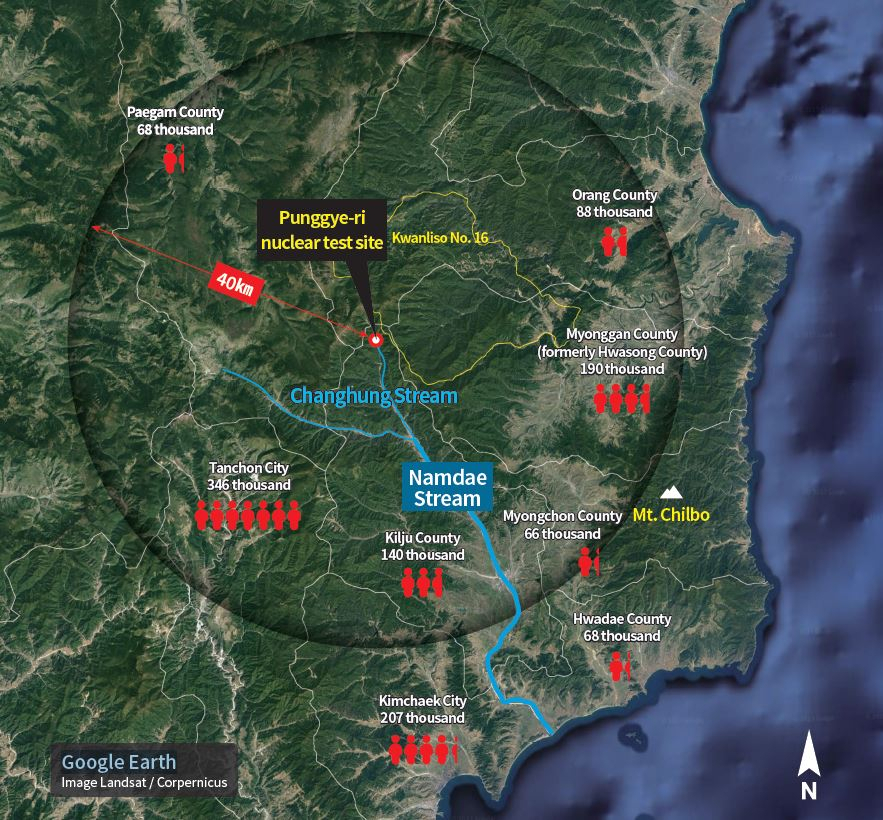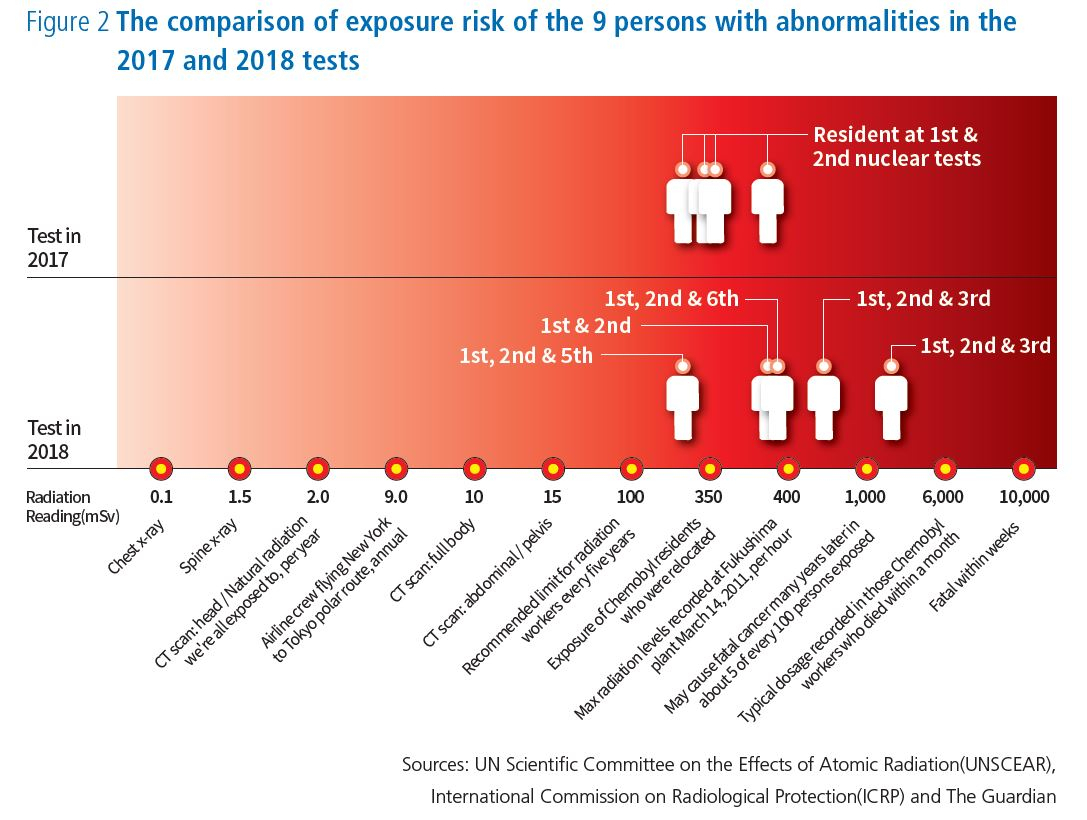Potential radiation exposure to North Koreans near nuclear test site overlooked: report
Rights group highlights human rights implications of North Korea’s nuclear program
By Kim ArinPublished : Feb. 21, 2023 - 18:17

Hundreds of thousands of North Korean residents near the Punggye-ri nuclear test site are living under the possible risk of nuclear radiation exposure, a Seoul-based nongovernmental organization said in a report Tuesday, and called it a serious human rights question that is often overshadowed by security concerns.
In the report, the Transitional Justice Working Group said existing literature on the North Korean nuclear issue so far has been marked by a lack of attention to how people living near the site are affected.
“Six nuclear tests have made Punggye-ri and Mount Mantap internationally famous, but there has been a dearth of studies on how many people live near the site of repeated tests of increasing magnitude, what they eat and drink and how their health is affected,” the TJGW said.
The residents in the vicinity of the Punggye-ri nuclear test site were likely not being informed of the possible risks of exposure to radiation and contamination of the area, the report said. It was also questionable whether North Korea had the capacity to provide medical treatment to those suffering from exposure to radiation.
Lee Young-hwan, the TJWG’s executive director, said interviews of North Korean escapees from near the site showed they were “unaware of nuclear tests being conducted there, much less the dangers of a possible radiation exposure.”
“The North Korean government has a responsibility to inform its people of the risks facing them, and take steps to protect them from the possible harms,” he said.
“There are simple steps, such as telling them to refrain from using groundwater from the areas of nuclear leaks and radioactive contamination as drinking water. It doesn’t take sophisticated technologies to allow the residents to stay informed.”
The report said the South Korean government, as a “key stakeholder,” has failed to address this risk properly.

The report pointed out that the South Korean government has yet to disclose the full reports on radiation exposure tests conducted in 2017 and 2018 for 40 escapees from Kilju County, where the Punggye-ri nuclear test site is located.
Some of the test results obtained by the National Assembly revealed that varying degrees of chromosomal abnormalities were observed in nine of the 40 escapees who were tested. The tests were carried out by the Korea Institute of Radiological and Medical Sciences, and then submitted to the Ministry of Unification.
The report urged the South Korean government to inform North Korean escapees from cities and counties near the Punggye-ri site about radiation exposure risks, and provide examination and necessary treatment for all those who are willing.
Shin Hee-seok, a legal analyst with the TJWG, said the South Korean government should be more transparent about the findings from past investigations, and conduct additional investigation of North Korean escapees from the regions belonging to the range of possible leakage.
“South Korea, based on the available results results, can raise awareness within the international community and together urge North Korea to conduct an investigation of the impact on its population,” Shin said.








![[Hello India] Hyundai Motor vows to boost 'clean mobility' in India](http://res.heraldm.com/phpwas/restmb_idxmake.php?idx=644&simg=/content/image/2024/04/25/20240425050672_0.jpg&u=)










